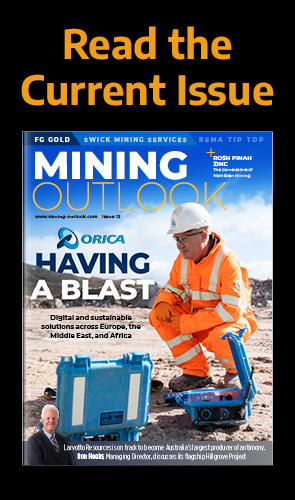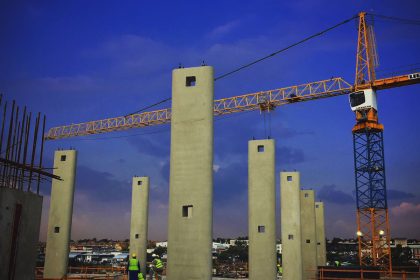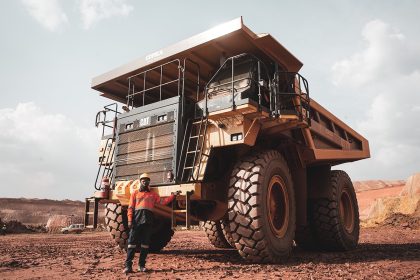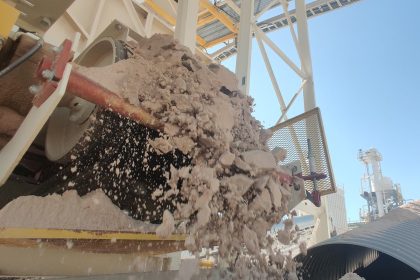With global demand for aluminium growing, the industry has seen an influx of bauxite mining. The International Aluminium Institute is therefore on a mission to ensure that bauxite mining is implemented sustainably, as Programme Manager, Carl Firman, tells us.
ABUNDANT ALUMINIUM
Founded more than 50 years ago, the International Aluminium Institute (IAI) is the only global organisation to represent the primary aluminium industry.
The IAI’s current members span all areas of the primary industry, including global bauxite, alumina, and aluminium companies in all the major producing regions.
The institute aims to promote a wider understanding of the aluminium industry to demonstrate both its responsibility in producing the metal, and the potential benefits of using aluminium in sustainable applications and recycling.
“As a forward-thinking organisation, we undertake research, produce guidelines, proactively promote sustainability programmes, and engage in global industry initiatives on issues of common interest,” opens Carl Firman, Programme Manager at the IAI.
In its mission to establish a sustainable bauxite mining industry, the IAI strives to establish acceptably low social and environmental impacts, both during operation and post-closure.
“The principles of sustainable bauxite mining are focused on reducing the impacts on biodiversity, land, and water, whilst promoting community engagement, which can also improve the sustainability of mining operations,” Firman explains.
GUIDELINES FOR SUCCESS
The first Sustainable Bauxite Mining Guidelines were published in 2018. However, due to recent changes in technology, research, and thinking on the topic, the guidelines required revision.
“New entrants into the bauxite mining industry have, in some cases, led to questionable practices. To alleviate this, the IAI, in partnership with the Australian Aluminium Council and the Brazilian Aluminium Association, produced an updated set of guidelines,” Firman asserts.
The IAI’s recent guidelines include key updates on tailings management systems and regulations, community initiatives, case studies, and issue-specific guidance.
“It’s important for the industry that it demonstrates and promotes good governance, reduced environmental legacies, fewer safety incidents, and increased community benefits,” he comments.
The IAI’s updated guidelines aim to identify the key topics affecting sustainable bauxite mining, and case studies help to provide guidance for each unique mine.
“It’s not possible to have a one-size-fits-all approach, because each operator and mine location will have its own criteria to meet. The guidelines simply provide detailed information that can be used in each unique situation when it comes to managing risk and applying technologies,” Firman details.
The guidelines for sustainable bauxite mining can result in better financial outcomes and increased competitiveness, whilst enhancing company, country, and industry reputation and credibility.
“The principles of sustainable bauxite mining are focused on reducing the impacts on biodiversity, land, and water, whilst promoting community engagement, which can also improve the sustainability of mining operations”
Carl Firman, Programme Manager, International Aluminium Institute
KEY CONSIDERATIONS
The IAI’s guidelines for sustainability are certainly comprehensive. Of the 56 points listed, the institute has usefully outlined the key takeaways for each category.
“In relation to good governance, there are three key considerations: documentation, compliance, and publishing performance,” Firman states.
In terms of community, the IAI promotes the use of a social impact assessment prior to mining, to ensure significant risks can be mitigated. It also aims to ensure social and economic contributions are made to communities, and that their development is generally supported.
“Health and safety, given the infrastructure of a mine, is imperative. There is also the physical and mental well-being of individuals to be considered,” he continues.
The IAI advocates the careful documentation of health and safety procedures, including risk assessments, whilst understanding that the health needs of a community prior to the commencement of a project can assist mine operations.
In terms of environmental sustainability, the IAI recommends a complete pre-mining impact assessment and a documented environmental management system (EMS) to identify hazards and assess risks.
“These guidelines elaborate the aluminium industry’s objective to ensure bauxite mining is sustainable and that social and environmental impacts during operation and post-closure are minimised,” Firman summarises.
CASE STUDY – THE AMAZON REGION
The IAI maintains that case studies can be considered an important feature of the guidelines for sustainable bauxite mining.
“Showing real life success stories of sustainable mining illustrates that it can be done,” Firman outlines.
Alcoa, located in Brazil’s Juruti region in the heart of the Amazon, is one such example. Here, sustainability is of the utmost importance not just regionally, but globally.
At an estimated 700 metric tonnes, Juruti is one of the largest high-quality bauxite deposits in the world.
“The region is recognised as a sustainability benchmark, as it demonstrates the positive social and economic effects of responsible bauxite practices in the local community, whilst enhancing environmental conditions,” enthuses Firman.
SUSTAINABLE GROWTH
The IAI forecasts that the demand for primary aluminium will grow from 64 megatonnes (mt) in 2020 to over 88 mt by 2050, an increase of more than 35 percent.
“Considering that around 85 percent of bauxite is used to produce aluminium, and four to six tonnes of bauxite is required to be refined into two tonnes of alumina, demand for bauxite is going to be considerable,” Firman observes.
Thus, the need for responsible bauxite mining becomes even more pressing.
“We need everyone with responsibility for operating mines to read these guidelines and understand how to put them into practice to create more sustainable mines,” Firman urges.
In the past, an influx of questionable environmental mining practices has led to authorities imposing moratoria or even bans on bauxite mining.
“There is no excuse for bad practices or not being sustainable anymore, as guidance is now readily available,” Firman concludes.



































